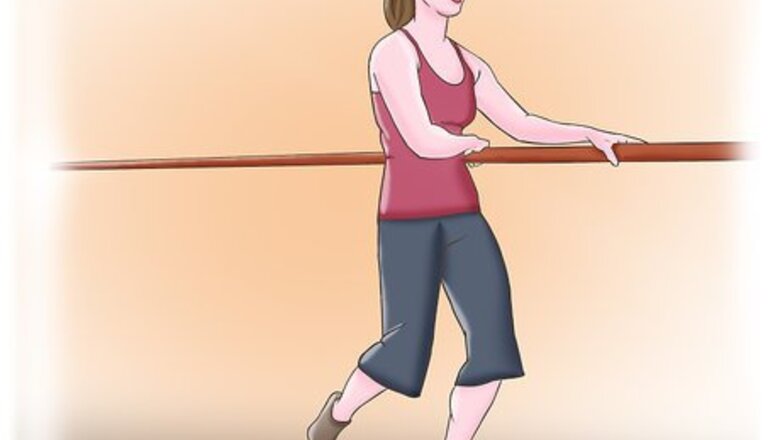
views
Practicing at the Barre
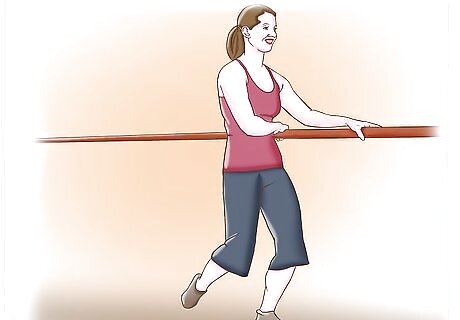
Start holding the barre in first or fifth position. If you don't have a barre, you can use the wall -- or even a banister! Just have something you can return to for balance.
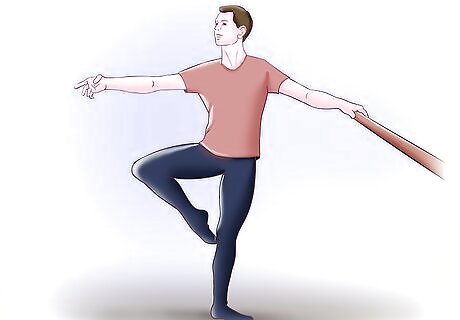
To prep for practice, go to passé en relevé. For the record, that means your right foot is brought to your left knee, right knee facing outward -- that's the passé part. Relevé is where you are up on your toes. We'll be working with your right being your working leg, obviously. In this position, hold the bar with your left hand. Keep your core tight, pulling up your ribcage and keeping your hips down. Your right arm should be in the first position.
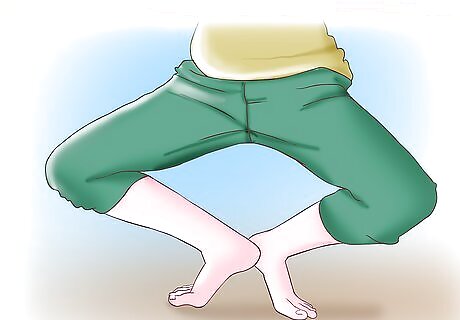
Plié and développé front. Your arm stays in first position and your hips stay down. Plié is to bend your left leg slightly at the knee, making sure to keep your knees over your toes. To developé to the front, point your right toe stretched out in front of you at a 90-degree angle.
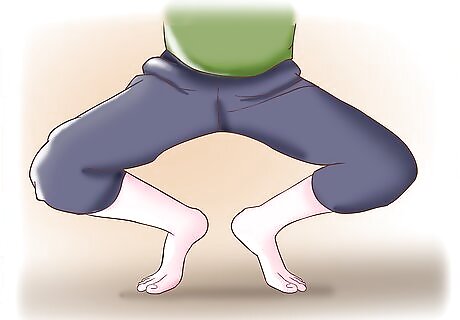
Open your leg to the side, or à la seconde. Your arm opens to the second position as well. You remain in plié, knees over your toes. Make sure to keep your hips down!
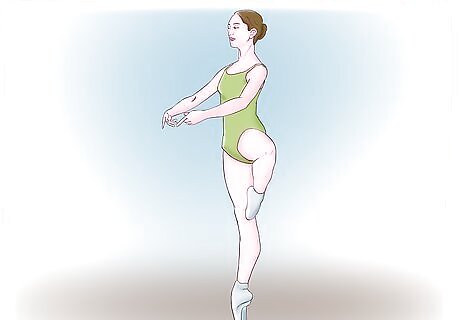
Bring everything in at once. Your arm goes back to the first position, your leg resumes passé, and you go back to relevé. Remember: core tight and hips down at all times!
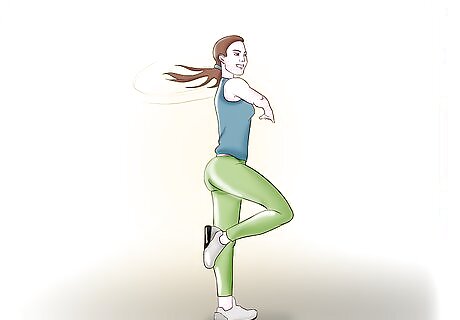
Once you have those three moves down, do a pirouette. Plié and developé to the front, go to second, and then do a pirouette, staying at the bar. This is your basic fouette turn, but with training wheels. Once you feel comfortable here, you can do some floor work!
Mastering the Turn
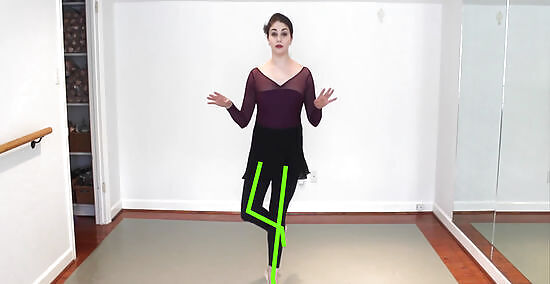
Establish your one-legged relevés, ensuring you can do thirty-two comfortably in a row. A fouette is both a turn and a relevé at once, so if you can't handle the relevés just yet, you should work on building this leg strength and balance. Note that you don't always do 32 fouettes at once -- but if you can hit the maximum, doing less will be a cinch. A solid, balanced, strong relevé is essential. To do one relevé: Put one foot on the ground, and the other slightly behind you. Press straight up on your toes, standing up on one foot. Keep your hips moving only up and down, and your body straight. Practice moving your free leg out and around (try a "ronde de jambe") and keeping your body balanced and still.
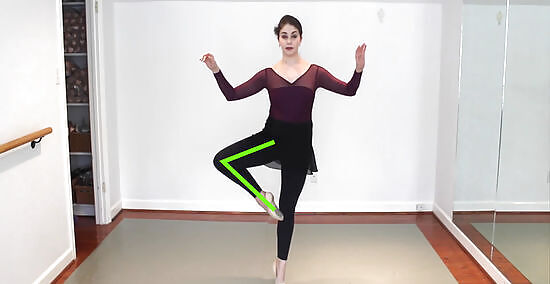
Staying planted on your relevé foot, practice the out, around and inward foot movement with your free leg. Again, this is a smaller part of a fouette, not the entire thing, but you need to nail this movement if you ever want to pull off the full turn. Balancing evenly, not on your toes, of your right foot (right-footed dancers), practice the following three steps without tipping or losing balance. Your hips, in particular, should not move. Lift your left leg straight in front of you. Arc your left leg to the right, so that it points perpendicular to your body. Bend at the left knee to bring your left toes to your right leg, the center of your body. Your feet are in the fourth position.
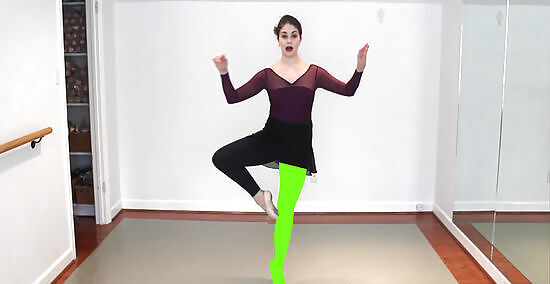
Focus on your supporting leg to stay in place, not the swinging leg. As you practice, work on making the extended leg second nature so that your attention goes instead to your plant leg. By centering yourself on the planted leg, you ensure you don't drift around the stage or lose balance as you get tired and keep spinning. Remember to keep your hips in the same place. They should spin like a top on that supporting leg.
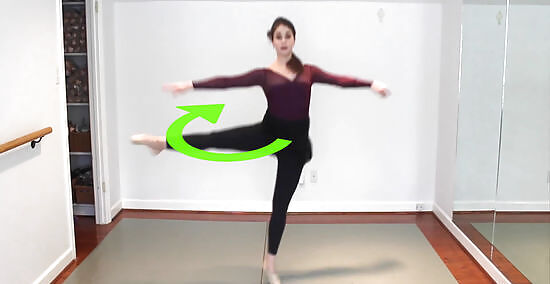
Use the swing to the side to build your momentum. Many young dancers will swing up, turn their leg a bit to the right, then immediately tuck in. But that kick sideways provides the bulk of your momentum and needs to be a major part of the fouette. Think of someone grabbing your foot and spinning it to the right to rotate you on that planted foot.
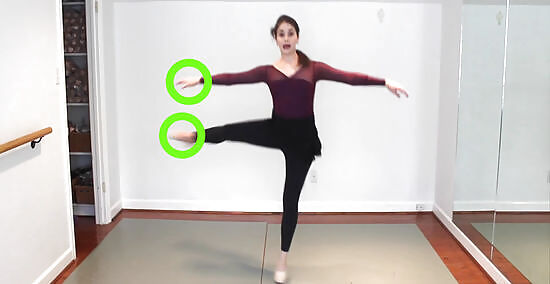
Coordinate the extension of your hands with your leg kick. As your left leg kicks to the right, your left arm should fly out with it. Think of your left hand and left foot as being tethered together on a string. This creates full body momentum, making it much easier to keep your balance. As your toes come in towards the end of the turn, you pull your hands back in with them. Then they both push out afterward for the next spin.

Keep your chest up and open to spin easier. Use your hands to open you body up. Your shoulders should be up and chest out. When your hands come in, don't let your body crumple or cave inward. You want to be tall, strong, and on balance. The chest needs to be lifted to make this possible.












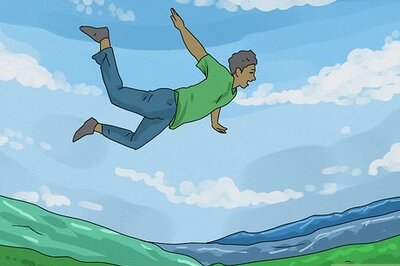




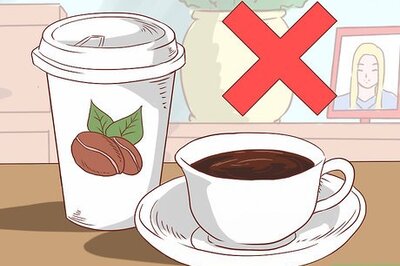
Comments
0 comment